How to permanently get rid of food moth in the kitchen
If you regularly do preventive maintenance in the kitchen, then the question of how to get rid of food moths will not arise. The process of destroying pupae, worms and butterflies is quite lengthy and requires effort. Adult individuals live in non-standard places and it is difficult to find the places of their settlement. Modern methods are the use of chemicals and improvised means.
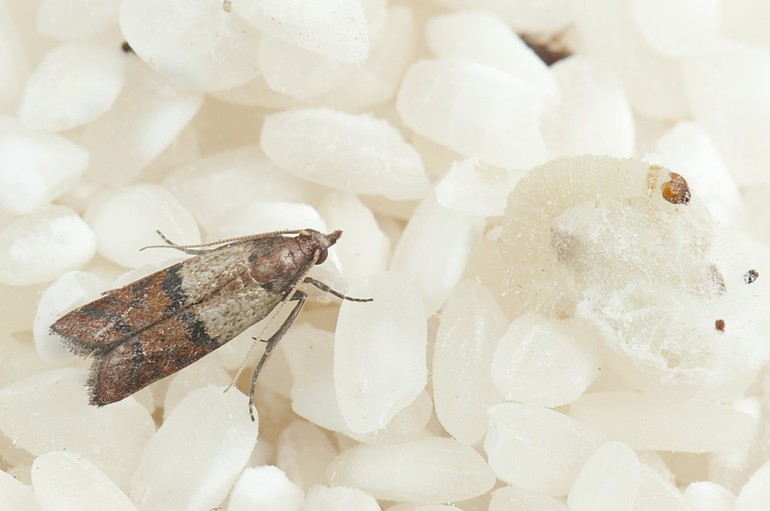
General concept
The pest of the family of Lepidoptera butterflies is small in size, its body in length in the position of the closed wings is 5-8 mm. Hanging insects have a yellowish-gray color, and food moth has a dark beige or brown color, but some species can change color, adapting to the living environment. Larvae look like worms or caterpillars no longer than 1 cm long with dark heads.
There is an erroneous opinion that insects are not dangerous to humans, do not cause harm to health, therefore they should not be afraid. Parasites constantly multiply, several hundred larvae emerge from the eggs, which infect food with feces and particles of the discarded shell.

The appearance of moths in home stocks provokes:
- food poisoning and intoxication;
- disorders in the work of immune defense;
- allergic manifestations.
In fact, a person eats the fruits of vital insect waste. Moths are not dangerous to humans, except that they lay new eggs, and the cycle repeats. Grocery moth does not spoil clothes in wardrobes, you can not worry about the contents of the wardrobe. The body of insects does not produce enzymes that help digest tissue fibers.
Biological cycle
The female lays 50-200 eggs, the size of which is in the range of 0.25-0.5 mm, while evenly distributing them over the area or concentrates in one area. After 10−12 days, translucent whitish larvae hatch. Caterpillars actively feed, from the material of the surrounding products form a cocoon in the form of a spindle for transformation into a pupa.
The development of the pest goes through 4 stages:
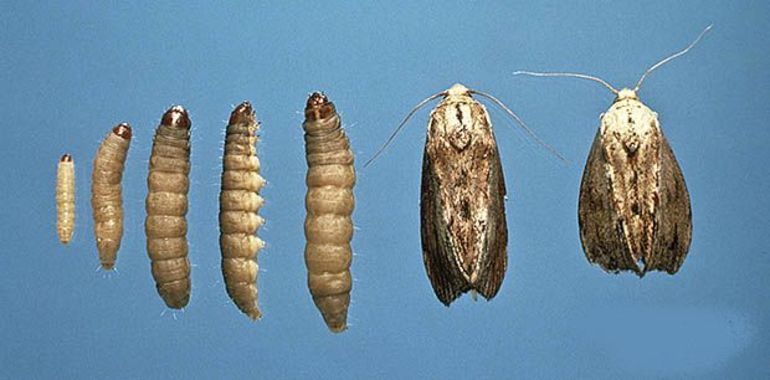
- egg;
- caterpillar (larva);
- pupa;
- adult (adult).
Pupation occurs on 37–50 days; the final length of an individual is 5–7 mm. In the process of transformation, the color changes from light cream to dark brown. The stage of being in the body of the pupa lasts 1-2 weeks, then the butterfly grows.
The female pest lays eggs for 3-5 days, and a week later the butterfly dies. The breeding of moths occurs throughout the year, if there are suitable conditions for this, while the full turn of development in time takes 30−35 days. The process of reproduction in humid conditions of a warm room is activated.
Species and habitats
There are difficulties finding the moth settlement area. The first stages of insects pass in the layer of products, therefore they are hidden from prying eyes. Adult individuals fly randomly, it is not easy to catch them and find the final goal of landing.
In an apartment or a private house there are three varieties of food moth:
- flour moth;
- cocoa fire (very rare);
- barn southern ognevka (difficult to remove).
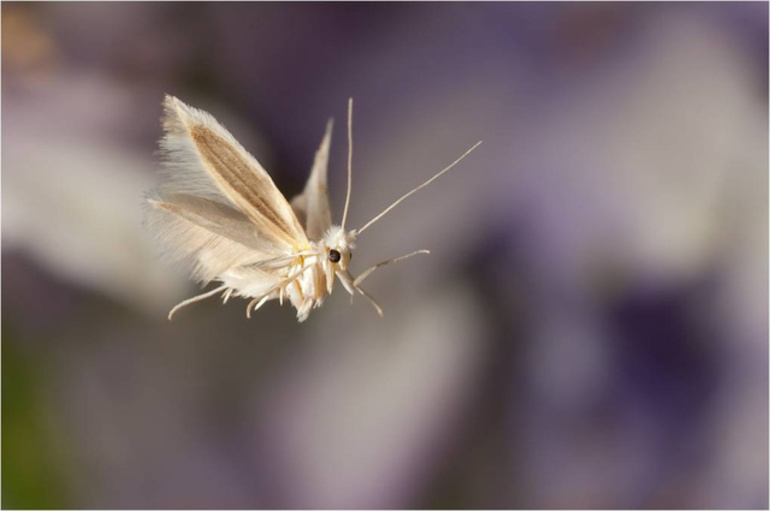
In reality, butterflies do not move aimlessly, they are looking for a pair (males) or determine a suitable place for laying eggs (females). Slowly flying moths are rare, more often insects move quickly and in different directions, so it is sometimes difficult to catch them.Males are in flight for a longer time, and belly females move in dashes, overcome obstacles and try to hide in secluded corners.
Common egg laying places:
- food stocks;
- kitchen areas behind cabinets, under the windowsill, idle appliances;
- cardboard boxes, packs;
- places under the kitchen ceiling or on fixture elements.
Doctors and pest control experts express a common opinion that once an infection is detected, pests must be permanently destroyed in order to protect people. Moth is especially dangerous for the child's body, because toxic products and waste products from individuals cause irreparable harm to the developing organism.
Reasons for the appearance
To easily find food pests and then get rid of grocery moths, you need to know which foods she prefers. Particularly attractive are long-term stocks with open access, for example, in loose packaging or ajar containers. More often, moth settles in products that are stored after the expiration date.
The question of where and why food pests can be taken worries many housewives who believe that they themselves are to blame for the problem. Moth starts not only due to non-compliance with sanitary standards in the house, but also in the case of insects being brought in with products from the store, where worms and pupae already live. At retail outlets, the pest can be acquired in stale grains for which shares for sale are announced. Unscrupulous sellers do not comply with storage conditions, especially if cereals are stored in large bags.
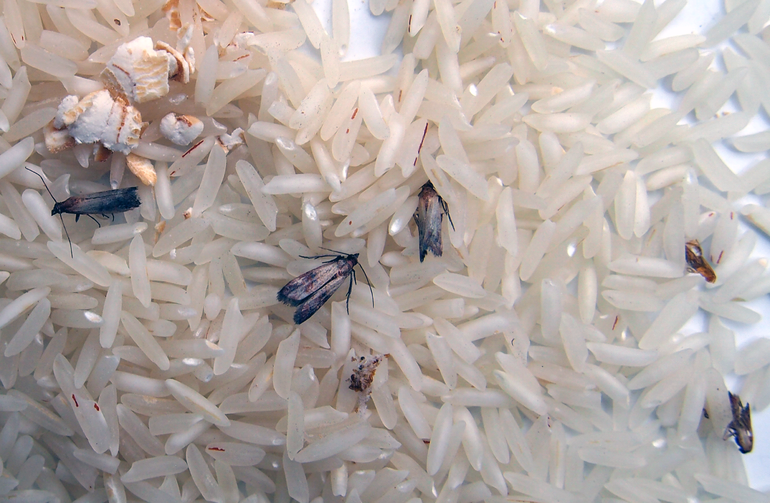
Products that grocery moth likes:
- flour and cereal stocks (rice, pasta, millet, wheat, other species);
- fruit and other fruit drying, candy products;
- nuts, pistachios, nut, buckwheat, pea flour.
Caustic and viscous substances, for example, vinegar or honey, are not infected, since they are dangerous for larvae by flooding. Another common cause of pests is their penetration from neighbors, and they spread in a multi-storey building through ventilation or fly into open windows.
Methods of struggle
If parasites are not removed, then the moth continues to multiply rapidly and spoil the products. In cases of severe damage, spoiled stocks are eliminated, and disinfectors are called for processing the premises.
Etching food moth is necessary in several stages:

- identification of the source of infection and locations;
- the destruction of adults, pupae and larvae;
- general cleaning and treatment of premises with damaging substances;
- regular prophylaxis.
All food products are inspected, the most affected are discarded. Those that do not have traces of worms are placed for processing in a microwave, oven or put in a freezer. Storage containers are washed, dried and processed with vinegar. The furniture outside and inside, the space under the ceiling, under the windows, behind the door trims is cleaned with a vacuum cleaner. Parasites multiply in these places, because during cooking it becomes wet and warm from evaporation.
Moth Remedies
Chemical preparations in the form of traps, aerosols, powders, and pencils help fight parasites. Insecticides kill adult pests, eggs and larvae. Products are always discarded after applying these products. Repellents include substances that repel parasites and prevent them from entering the kitchen. Such preparations do not destroy the moth, but make the butterflies lay eggs in the space of another room.
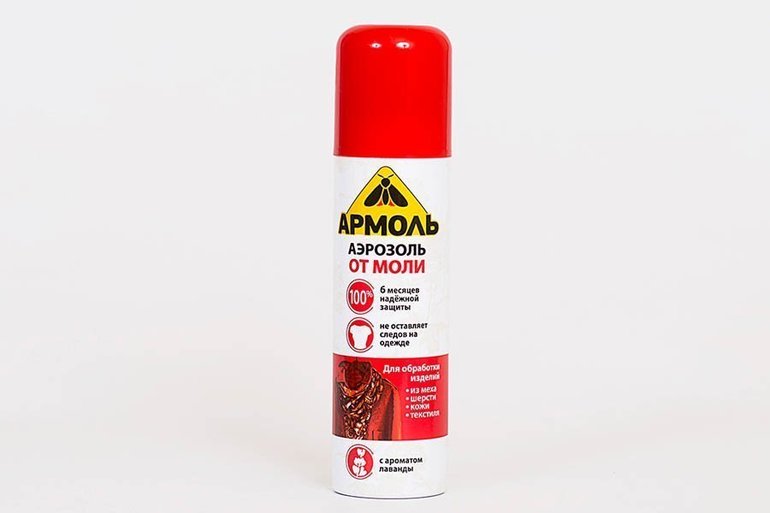
Sprays and aerosols are sprayed on the affected area and quickly kill pests. These chemicals have components that are dangerous to humans. Their use requires the absence of people in the room for some time. Velcro and traps serve as baits and poison pests, but butterflies not only from one apartment flock to the smell.
Fumigators work slower than sprays, but also relieve moths. The difference is that when using it does not require airing the kitchen, as after the use of aerosols. Sections are set only against adult individuals and do not affect pupae in any way. Preparations in this form are considered as protective measures.
Chemicals
During use, safety measures should be followed, for example, removing people, pets and plants from the kitchen. Before returning, the room is well ventilated, the treated surfaces are washed.
Name of common sprays:
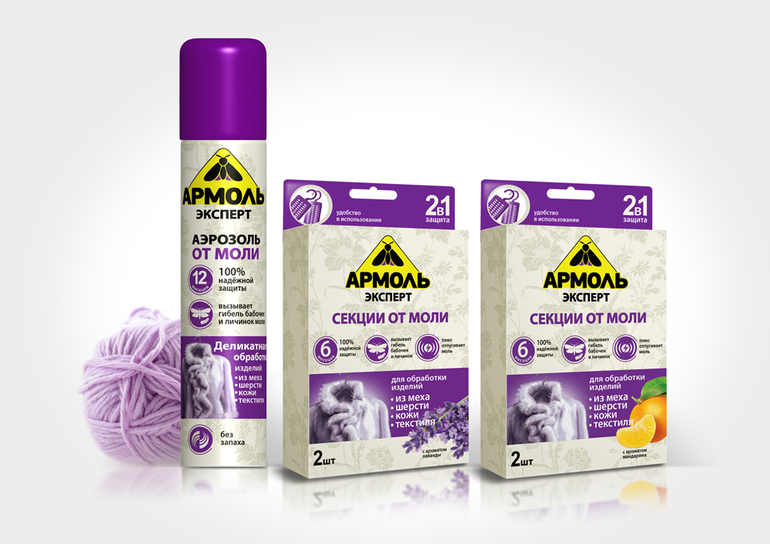
- Furniture, fabric are processed with antimole; after use, the effect remains for a year.
- Armol aerosol is designed for instant extermination, butterflies are affected, but newly born insects die due to prolonged action.
- Combat universally kills various types of moths, the drug is used on any materials and is safe for animals.
- Spray Bros effectively eliminates insects, lasts 4 months, works better on the inside of closed cabinets.
Traps are intended more for males, the destruction of which prevents reproduction. Argus is an excellent tool in the adhesive layer of which a poisonous component is added. It is placed for 3 months on top and inside the cabinets horizontally or vertically.
The raptor is used for destruction and as a preventive measure, it is installed for 90 days, in the package there are two sticky traps. Armol plates are impregnated with a pyrethroid, which is an insecticidal component. In the package up to 10 plates, which are valid for 2 months.
Greenfield pills are repellents. The drug is a long-acting talcum balls. The product contains aromatic oils that moth does not like. On the shelves of cabinets are laid out in the form of prevention to deter pests. Gloria records include natural components, esters, and therefore are classified as safe for humans and animals.
Folk recipes
The methods have long been used against parasites in the kitchen. They are used more to prevent food contamination than to destroy due to the slow action.
Use methods of struggle with the help of improvised means:
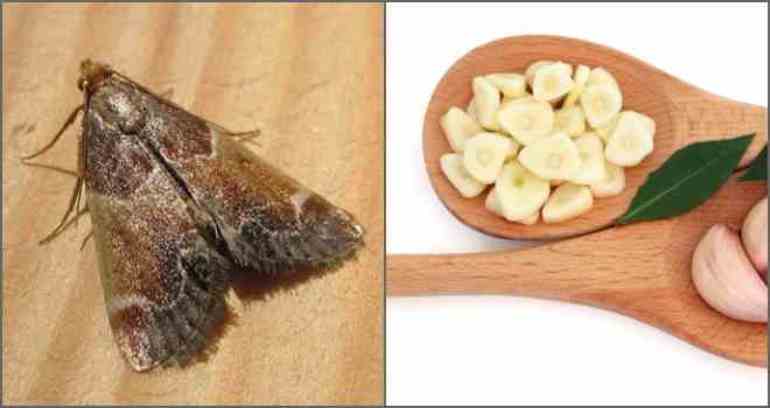
- cloves of garlic are laid out on shelves of cabinets, such a measure will not affect the taste of neighboring products, but the moth does not like this smell;
- bay leaves placed inside the kitchen furniture will help prevent infection of the space;
- dried lavender and mint are used to repel insects; you can use aromatic oils of these plants, which are applied to gauze or cotton swabs;
- peel of lemon, orange, grapefruit acts in dried and fresh form;
- geraniums and pelargonium also do not like grocery moths, so they put flowers on the window so that the butterflies do not fly into the open doorway;
- tampons are applied with tansy, rosemary, basil, fir, rosemary oil, freshly picked or dried plant specimens can be put;
- wormwood is laid fresh with whole branches to remove butterflies and prevent egg laying in this room;
- fresh nut leaves with a specific odor against moths are used.
Modern housewives almost never use camphor oil, although it effectively removes moth from the kitchen. Tobacco or shag is working effectively, dried plants are laid out inside the furniture, under the windowsill, placed near the baseboards.
Preventative measures
Regularly do protective procedures to prevent the appearance and reproduction of pests on the shelves of kitchen furniture. Cereals and other long-term products should be purchased at trusted retailers. You can’t buy a lot of cereals and flour for the future, so that in case of infection you do not have to throw away a large number of products. It’s easier to see small bags and containers than to sort through the groats in bags.

Bulk products are purchased only high-quality, at full cost, because the offer offers stale goods, which are most often stored in violation of sanitary standards in warm warehouses. It is not recommended to put food in open or torn packaging in a cabinet. Food packages are regularly reviewed to identify not only worms and pupae, but also incomprehensible lumps of cereal wrapped in cobwebs.
On the Internet there are recommendations to put cereals in the freezer for several hours. This measure will help the moth larvae fall asleep, but will not kill them. Pests actively multiply after being placed in a familiar environment. Regular wet processing inside the furniture with laundry soap or vinegar, cleaning of spilled cereals on shelves helps a lot. Smelling plants and deterrents are required.
- How to choose a vacuum cleaner taking into account the characteristics of the house and coatings?
- What to look for when choosing a water delivery
- How to quickly create comfort at home - tips for housewives
- How to choose the perfect TV - useful tips
- What to look for when choosing blinds
- What should be running shoes?
- What useful things can you buy in a hardware store
- Iphone 11 pro max review
- Than iPhone is better than Android smartphones



